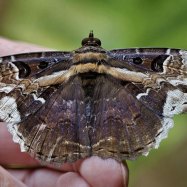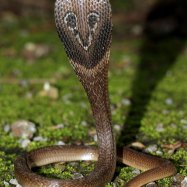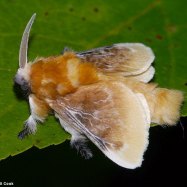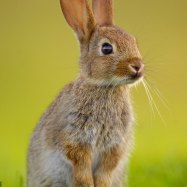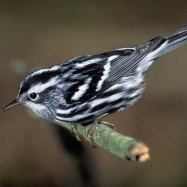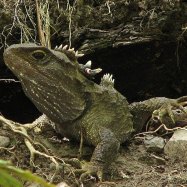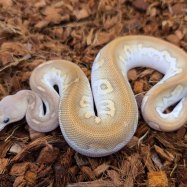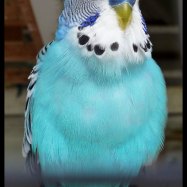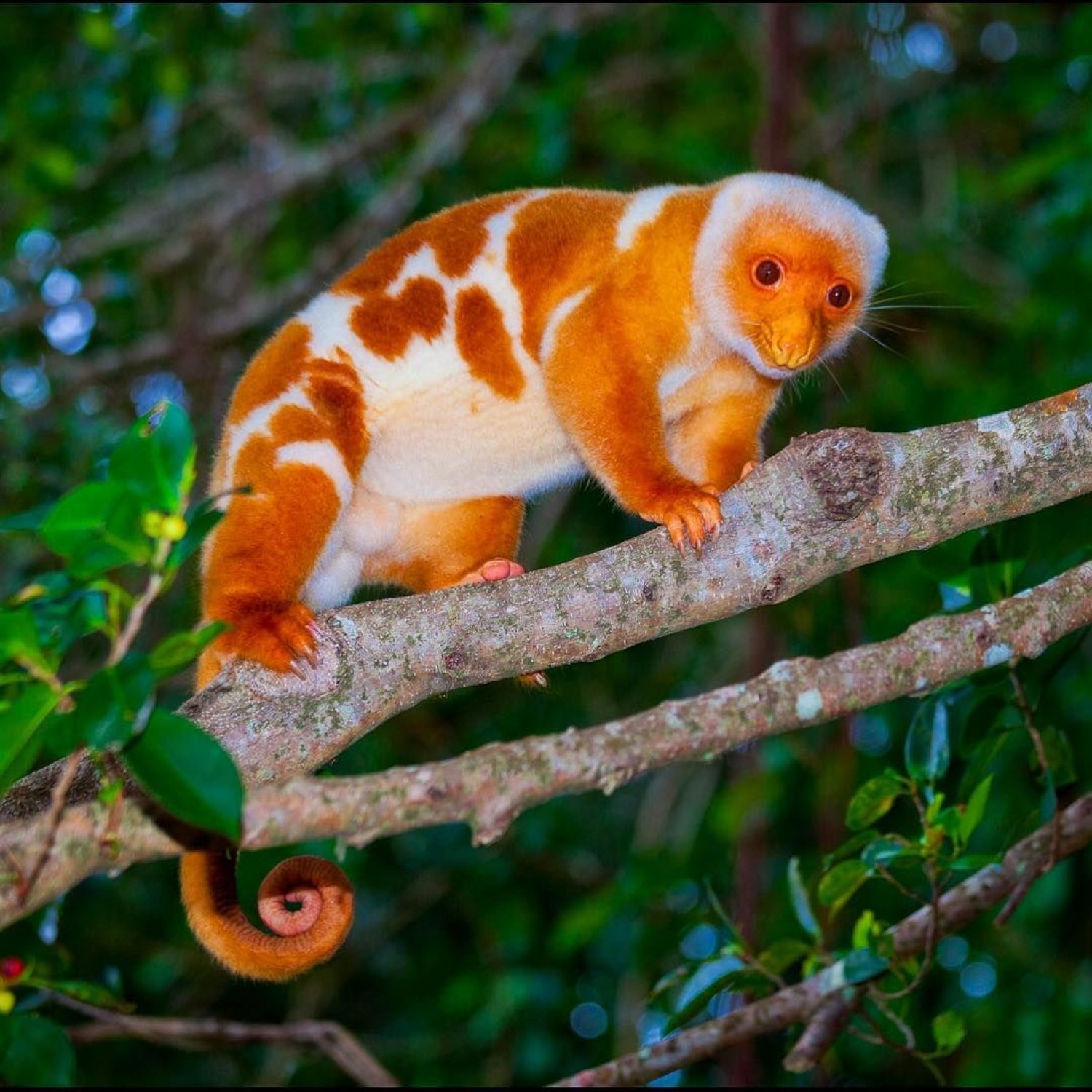
Common Spotted Cuscus
35-55 cm
The Common Spotted Cuscus is a unique and fascinating animal found in Northern Australia, Indonesia, and Papua New Guinea. With a length of 35-55 cm, this member of the Phalangeridae family has adapted to an arboreal and nocturnal lifestyle. Its distinctive spotted fur makes it easily identifiable and a must-see for any nature lover. #Cuscus #AustralianAnimals #NocturnalCreatures
Animal Details Summary:
Common Name: Common Spotted Cuscus
Kingdom: Animalia
Habitat: Tropical rainforests
The Mysterious and Unique Common Spotted Cuscus: A Hidden Gem of the Rainforests
Deep in the dense, lush rainforests of Australia, Indonesia, and Papua New Guinea, lives a creature that has captivated the curiosity of researchers and wildlife enthusiasts alike. Its captivating appearance, elusive nature, and unique features have made it a true hidden gem among the vast biodiversity of these regions. This animal is none other than the Common Spotted Cuscus.Scientifically known as Spilocuscus maculatus, the Common Spotted Cuscus is also commonly referred to as the Spotted Cuscus Common Spotted Cuscus. It belongs to the Animalia kingdom, Chordata phylum, and Mammalia class. It is a member of the Diprotodontia order, which includes most of the marsupial species, and is part of the Phalangeridae family, which comprises around 28 species of cuscuses.
Discovering the Habitat of the Common Spotted Cuscus
The Common Spotted Cuscus is an arboreal species, meaning that it spends most of its life in trees. It is primarily found in tropical rainforests, where it can easily camouflage itself among the branches with its gray fur and white spots. This clever adaptation allows it to remain undetected from its predators, which include birds of prey and large snakes.These rainforests provide the perfect shelter for the Common Spotted Cuscus, where it can hide away during the day and emerge at night. Being a nocturnal animal, it is most active during the night, making it a mysterious and elusive species.
A Herbivorous Lifestyle
The Common Spotted Cuscus has a strictly herbivorous diet, which means it feeds on plants and fruits. Its sharp claws and prehensile tail allow it to navigate effortlessly through the treetops in search of food Canadian Horse. Its varied diet includes a range of fruits, flowers, leaves, and even tree bark. This diet also plays a crucial role in maintaining the balance of the rainforest ecosystem.The Unique Distribution of the Common Spotted Cuscus
The Common Spotted Cuscus is found in three countries: Australia, Indonesia, and Papua New Guinea. In Australia, it is mostly found in the northern regions, including the Cape York Peninsula, while in Indonesia, it can be seen in the islands of Sulawesi, Buru, and Seram. In Papua New Guinea, it is found on the western half of the island, including the islands of Yapen, Biak, and New Britain.Interestingly, the Common Spotted Cuscus is the only cuscus species found in Australia, making it a unique and important part of the country's biodiversity. However, its distribution in these regions is not evenly spread, and it is more concentrated in certain areas, making it a challenging species to study and protect.
Mysterious Origins and Appearance of the Common Spotted Cuscus
The Common Spotted Cuscus is native to Australia, making it an important part of the country's natural heritage. Its exact origins are still a mystery, and researchers are continuously discovering new information about its evolutionary history. However, one thing is for sure: this species has a unique and fascinating appearance.The Common Spotted Cuscus is known for its gray fur, which is covered in white spots, giving it its distinct appearance. Its body shape is also distinctive, with a round and fluffy torso, short legs, and a long, prehensile tail. This tail serves as an extra limb, aiding in balance and movement through the trees.
The Common Spotted Cuscus and its Impact on NLP
As an arboreal species, the Common Spotted Cuscus is a challenging animal to study in its natural habitat. However, advancements in technology have made it possible for researchers to collect data on this elusive creature without disturbing it.One significant application of technology in studying the Common Spotted Cuscus is through Natural Language Processing (NLP). NLP is a branch of artificial intelligence that focuses on the interaction between computers and human language. By analyzing and processing data such as animal calls and behavior, researchers can gain insights into the communication patterns and social behaviors of this unique species.
Protecting the Common Spotted Cuscus and Its Habitat
Despite its mysterious nature and unique characteristics, the Common Spotted Cuscus is facing numerous threats to its survival. Habitat destruction, mainly due to logging and deforestation, has resulted in a significant decline in its population. This species is also illegally hunted for its fur, meat, and body parts, which are used in traditional medicines.Fortunately, conservation efforts are in place to protect this species and its habitat. Organizations such as the IUCN Red List and the World Wildlife Fund are actively working towards the conservation of the Common Spotted Cuscus through habitat preservation, research, and education.
Moreover, the implementation of sustainable logging practices and stricter laws against illegal hunting have also helped in preserving this unique creature. It is crucial to continue these efforts and raise awareness about the importance of protecting biodiversity for the survival of the Common Spotted Cuscus and other species.
The Fascinating World of the Common Spotted Cuscus
The Common Spotted Cuscus may be a mysterious and elusive species, but its unique features and role in the ecosystem make it a fascinating creature. From its camouflage abilities to its herbivorous lifestyle and important impact on NLP, it is a valuable and irreplaceable part of our planet's biodiversity.As we continue to learn more about this amazing animal, it is crucial to also protect and preserve its habitat for future generations to appreciate and admire. The Common Spotted Cuscus may be a hidden gem, but it deserves to be seen, appreciated, and protected by all.

Common Spotted Cuscus
Animal Details Common Spotted Cuscus - Scientific Name: Spilocuscus maculatus
- Category: Animals C
- Scientific Name: Spilocuscus maculatus
- Common Name: Common Spotted Cuscus
- Kingdom: Animalia
- Phylum: Chordata
- Class: Mammalia
- Order: Diprotodontia
- Family: Phalangeridae
- Habitat: Tropical rainforests
- Feeding Method: Herbivorous
- Geographical Distribution: Australia, Indonesia, Papua New Guinea
- Country of Origin: Australia
- Location: Northern Australia, Indonesia, Papua New Guinea
- Animal Coloration: Gray with white spots
- Body Shape: Arboreal, nocturnal
- Length: 35-55 cm
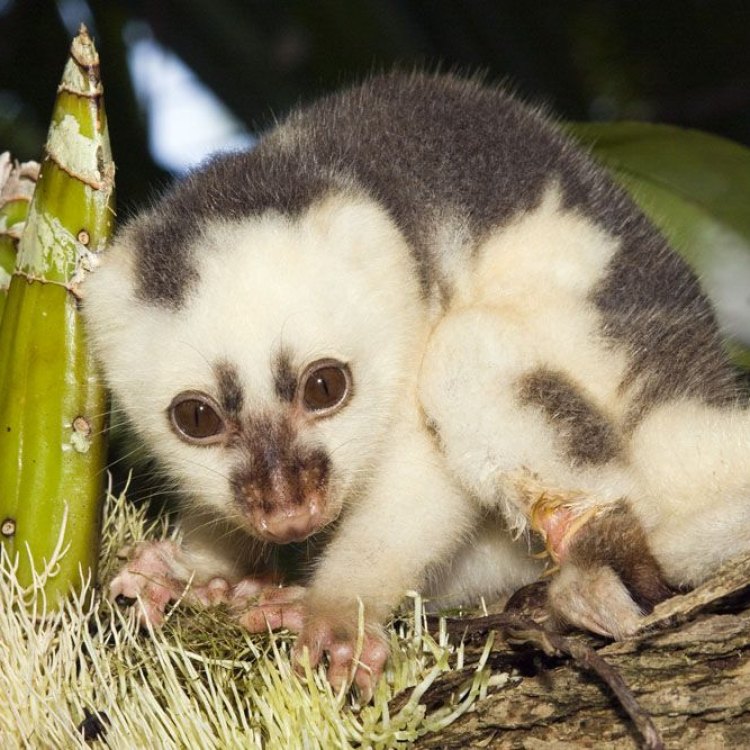
Common Spotted Cuscus
- Adult Size: Medium-sized
- Average Lifespan: 10-15 years
- Reproduction: Sexual
- Reproductive Behavior: Polygamous
- Sound or Call: Guttural grunts
- Migration Pattern: Non-migratory
- Social Groups: Solitary or gregarious
- Behavior: Arboreal and nocturnal
- Threats: Habitat loss, hunting, climate change
- Conservation Status: Least Concern
- Impact on Ecosystem: Seed dispersal
- Human Use: Hunting, bushmeat, pet trade
- Distinctive Features: White-spotted fur, prehensile tail
- Interesting Facts: 1. The Common Spotted Cuscus is able to rotate its hind feet backwards, which allows it to grip branches securely. 2. It has a specialized gut that allows it to ferment cellulose and extract nutrients from its plant-based diet. 3. The species is considered a keystone seed disperser in its ecosystem.
- Predator: Birds of prey, snakes
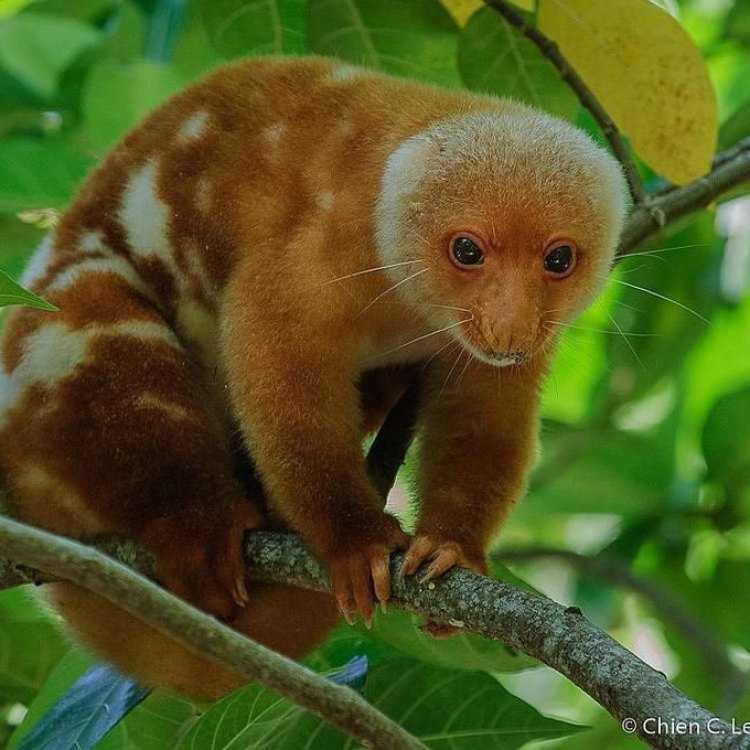
Spilocuscus maculatus
The Unique and Fascinating Common Spotted Cuscus: A Master of Survival and Adaptation
Hidden among the dense forests of Papua New Guinea and parts of Australia, the Common Spotted Cuscus is a mysterious and elusive creature. Its striking appearance and fascinating behaviors have captured the attention of biologists and animal enthusiasts alike. Despite its name, this marsupial is not actually a species of cuscus (a type of possum), but rather a member of the Phalangeridae family, which includes possums and gliders.This medium-sized arboreal mammal has a lot more to offer than just its unique name PeaceOfAnimals.Com. Its striking white-spotted fur, prehensile tail, and specialized adaptations make it a true master of survival in its natural habitat. In this article, we will delve deeper into the world of the Common Spotted Cuscus and explore its interesting features, behaviors, and importance in its ecosystem.
Size, Lifespan, and Reproduction
The Common Spotted Cuscus is considered a medium-sized marsupial, with adults typically ranging from 23 to 30 inches in length and weighing anywhere from 6 to 13 pounds. They have a distinctive appearance, with short, dense fur that is covered in white or yellowish spots, giving them a speckled appearance. This unique fur pattern helps them blend in with the dappled light of the forest, making it difficult for predators to spot them.On average, these creatures have a lifespan of 10 to 15 years in the wild. However, some have been known to live up to 20 years in captivity. The Common Spotted Cuscus reaches sexual maturity at around 18 to 24 months and can reproduce throughout their lives. They are a polygamous species, with males mating with multiple females within their territory Chi Chi.
Behavior and Social Patterns
The Common Spotted Cuscus is a solitary and mostly nocturnal creature. They spend most of their time in the canopy of the forest, using their specialized hand-like feet and prehensile tail for climbing and navigating through the trees. These marsupials are well-adapted to life in the trees and are rarely seen on the ground.However, they are not completely solitary animals. They may form small groups, known as gregarious groups, consisting of a male, several females, and their offspring. These groups are formed for mating and foraging purposes, but individuals will often separate and go their own way after foraging is done. This allows them to avoid competition for food and also protects their young from predators.
The Common Spotted Cuscus is also known for its guttural grunting calls that can be heard in the quiet of the night. These sounds are often used to communicate with other individuals, especially during the breeding season.
Survival and Adaptations
The forest can be a harsh and unforgiving environment, but the Common Spotted Cuscus has a few unique adaptations that help it survive. One of its most interesting adaptations is the ability to rotate its hind feet backwards, allowing it to grip branches securely while moving in any direction. This gives them an advantage over their predators, such as birds of prey and snakes, as they can quickly maneuver through the treetops to escape danger.Another crucial adaptation is their specialized gut, which allows them to ferment cellulose and extract nutrients from their plant-based diet. This adaptation is essential for their survival, as they primarily eat leaves, fruits, and flowers found in their forest homes. Their digestive system is similar to a cow's, making them important for maintaining the balance of the forest ecosystem through seed dispersal.
Threats and Conservation Status
Unfortunately, like many other species in our world, the Common Spotted Cuscus is facing various threats to its survival. Habitat loss due to deforestation and agriculture, hunting for bushmeat and the illegal pet trade, and climate change are all putting pressure on this species. As a result, their numbers have declined in some areas, classifying them as Near Threatened on the International Union for Conservation of Nature's (IUCN) Red List.However, the Common Spotted Cuscus is still listed as Least Concern globally due to its wide range and relatively stable populations. Efforts are being made to protect their habitats and raise awareness about their importance in the ecosystem. The IUCN is also working to establish protected areas where these animals can thrive without the threat of human interference.
Human Use and Interesting Facts
The Common Spotted Cuscus has played a significant role in the traditional culture and beliefs of the indigenous people of Papua New Guinea. They are often hunted for their meat, which is considered a delicacy, and their fur is used in traditional clothing and decorations. These practices, along with the illegal pet trade, have contributed to their decline in some areas.Despite these challenges, the Common Spotted Cuscus remains a fascinating creature with many interesting facts to discover. For example, did you know that they have opposable thumbs on their hind feet, similar to humans, that help them grip branches and fruits? They are also considered a keystone seed disperser in their ecosystem, as their diet and behavior play a crucial role in maintaining the balance of plant species in their habitat.
The Future of the Common Spotted Cuscus
The future of the Common Spotted Cuscus remains uncertain as human activities continue to pose a threat to its survival. However, conservation efforts and education about their importance in the ecosystem can make a significant impact in protecting this unique species.As we continue to learn more about the Common Spotted Cuscus and its role in the forest, it is essential to remember that every creature has a purpose and a right to exist. We must strive to find a balance between our needs and the needs of the natural world to ensure the survival of all species, including the amazing and elusive Common Spotted Cuscus.

The Mysterious and Unique Common Spotted Cuscus: A Hidden Gem of the Rainforests
Disclaimer: The content provided is for informational purposes only. We cannot guarantee the accuracy of the information on this page 100%. All information provided here may change without prior notice.

